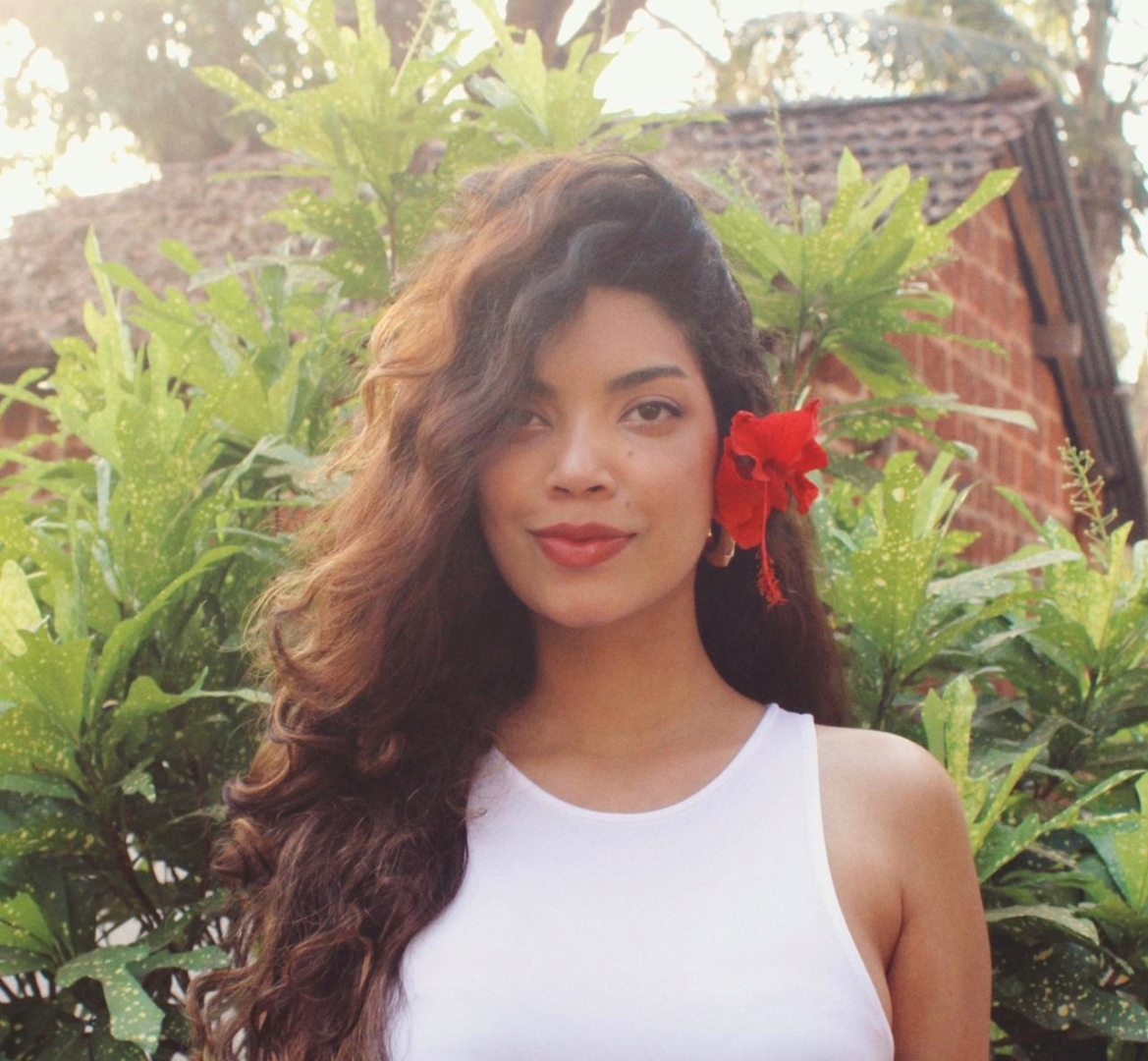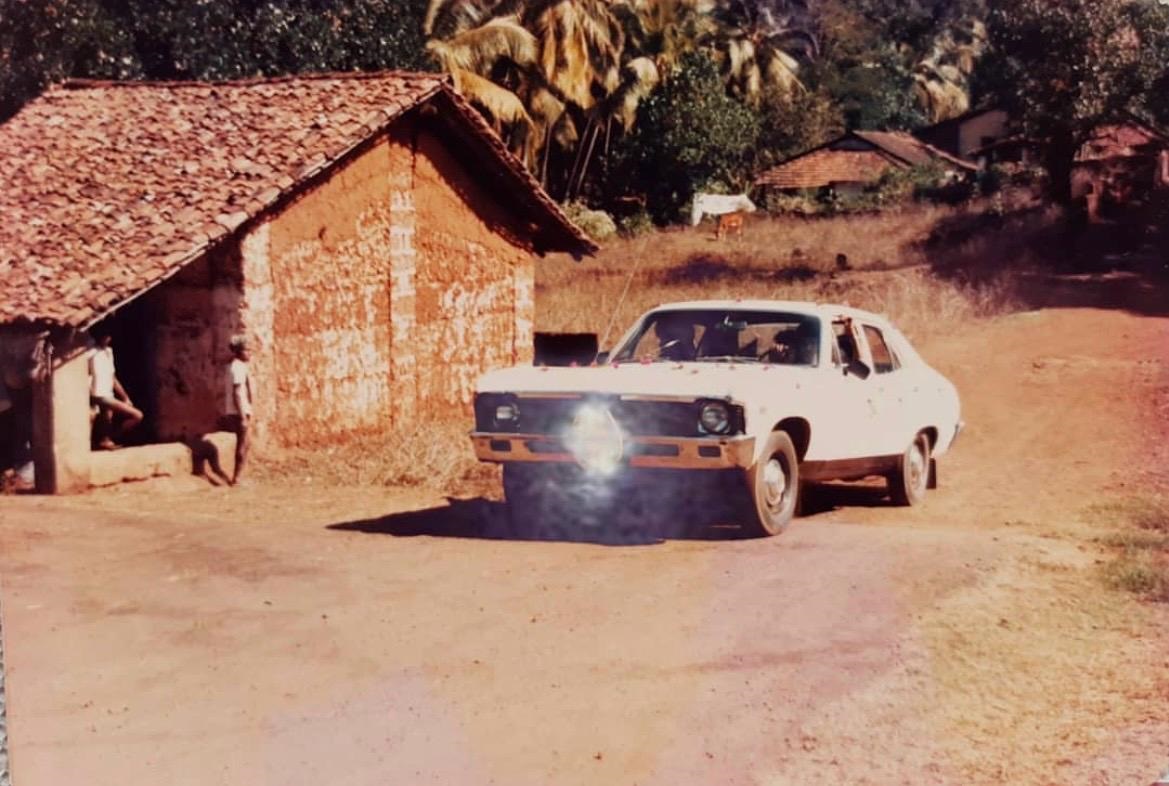
Nasya Pereira
Blending nostalgia with visual storytelling, multidisciplinary artist Nasya Pereira @nasyagoafreak created @vintagegoa.memories in 2018 to preserve Goa’s past through rare photographs and personal recollections. What began as a small online archive has evolved into a beloved community space that reconnects Goans with their roots.
How it began
I started @vintagegoa.memories back in 2018, right after I finished college. At the time, I was researching for my work as a digital artist. My designs were inspired by old collage art, and I found myself drawn to Goa’s past especially the hippie movement and the carefree aesthetic that surrounded it.
While browsing online, I stumbled upon rare photos of Goa from the 1960s and 70s, snapshots of a world I had never seen before. Back then, there weren’t many pages archiving Goa’s visual history. I began saving these photos for myself, but eventually I thought, why not share them with others? That’s how the page was born.
Selecting the photos
Initially, I sourced most of the images myself. I would spend nights deep-diving into Flickr, Facebook groups, and hippie trail archives, looking for photos that hadn’t already appeared on other “history of Goa” pages. I also began including pictures from my own family collection.
Over time, people started submitting their own photos, sometimes from personal albums that had never been digitised. Many of these images had never been seen publicly before. When people send me their photos, they often include details like the year, location, and the name of the photographer. That authenticity matters to me.
I don’t approach the page from a historical or academic angle; it’s more about emotion and nostalgia. I only post images that resonate with me personally.
 A 1970 Chevrolet Nova driving down the road in Revora in December, 1987.
A 1970 Chevrolet Nova driving down the road in Revora in December, 1987.
Pic by Nasya Pereira
Nostalgia as an anchor
For me, sunsets are the truest memory of Goa. No matter how much changes, the sunsets remain constant. That’s why you’ll find many sunset images on my page.
My own nostalgia shapes how I curate. Even though I was born in 1996, the photos from the 60s and 70s feel deeply familiar. Maybe because I grew up in Revora, a calm little village in north Goa. Later, as a teenager, I spent time in Vagator and Anjuna with friends. Those contrasting worlds of village life and the party scene, both find a place on @vintagegoa.memories.
I think that’s what people relate to. They see a post and remember their own stories. Some write to me saying they were actually at the very parties in the photos; like one person who recalled celebrating Christmas at Hilltop in 2004, right before the tsunami hit Southeast Asia. It’s moments like those that make the archive feel alive.
Goa through music
Music plays a big role in how I express nostalgia. I often link tracks to posts; songs that match the mood or era of the image.
In 2022, I created a playlist called Vintage Goa Memories Radio, featuring tracks that remind me of Goa, a mix of ambient, electronic, and trance music. Around the same time, I began working on my EP “Sounds Like Goa”, which I wrote, composed, and produced myself and released it in May this year.
Each track on the EP mirrors a moment of Goan life, “Dawn Oxel,” inspired by early mornings in Oxel; “Summer Noon Sorbet,” about my childhood summers in Revora; “My Ode To A Revora Sundown” and “Sossegado At Siolim Dusk,” which capture the peace of evenings spent by the river; “Vagator Moontrance,” which reflects nights in Anjuna and Vagator.
Watching Goa change
Since starting the page, I’ve noticed how Goa, especially the northern belt has changed drastically, especially after 2020. Earlier, development felt gradual, but now it’s rapid, almost unrecognisable in some places.
Whenever I post old photos of familiar locations, followers fill the comments with comparisons: “Look how it used to be.” “This place doesn’t even exist anymore.”
Challenges behind the page
Running an archive like this comes with challenges. The hardest part is finding new, unseen photographs. A lot of vintage images are already circulating widely online, often without credit. I try to avoid reposting what’s been overused and instead look for something unique and always with permission.
Getting that permission takes time. Some photographers take months to respond, and I wait patiently. Almost every image I post has been cleared for non-commercial use, which is why I’ve never monetised the page or collaborated with brands.
Unfortunately, other pages sometimes copy my captions and repost my photos without credit, even removing the photographer’s name. It’s frustrating because these images are shared with me in trust.
Preserving Goa’s past
For me, the page is not about history. It’s about connection; the shared warmth of remembering. Many followers who no longer live in Goa say they scroll through the page whenever they miss home.
I plan to eventually create a website to archive everything in one place; photos, videos, and stories because social media won’t last forever. This way, even if the platforms disappear, the memories won’t.